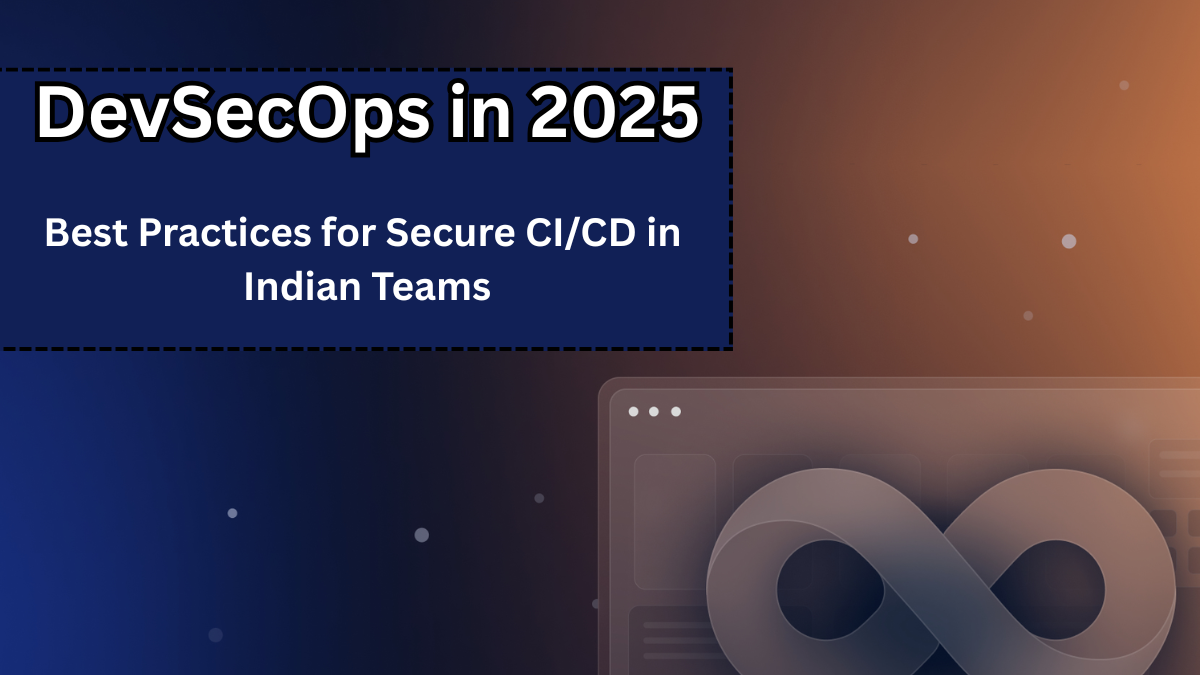In 2025, software development isn’t just about speed—it’s about building secure, resilient systems from the ground up. For Indian tech teams working in fast-paced environments, DevSecOps Best Practices 2025 are no longer optional but essential. This approach integrates security deeply into every stage of development, ensuring that Secure CI/CD pipelines are robust, agile, and threat-proof.

Why DevSecOps Matters More Than Ever
The software landscape is evolving rapidly:
-
Cyber threats are growing: From ransomware to supply chain attacks, the risks are becoming more sophisticated.
-
Regulations are tightening: With new data protection laws in India and globally, compliance is crucial.
-
Development is faster than ever: Continuous delivery requires security to keep up with speed.
In this context, DevSecOps isn’t just a buzzword—it’s a survival strategy for teams aiming to deliver secure, high-quality software.
Key DevSecOps Best Practices 2025 for Indian Teams
Shift Security Left
Security should begin at the earliest stages of development:
-
Include threat modeling during design discussions.
-
Perform static code analysis before pushing builds.
-
Train developers in secure coding practices.
Automate Everything
Automation is at the heart of Secure CI/CD:
-
Automate code reviews, testing, and vulnerability scans.
-
Use Infrastructure as Code (IaC) for consistent, secure deployments.
Continuous Monitoring and Feedback
-
Monitor systems in real-time for anomalies.
-
Set up alerting for unusual activity in pipelines.
-
Use feedback loops to improve processes constantly.
Foster a Security-First Culture
-
Encourage developers, testers, and operations teams to share responsibility for security.
-
Conduct regular security drills and knowledge-sharing sessions.
A Quick Snapshot: DevSecOps in 2025
| Focus Area | Best Practice | Impact |
|---|---|---|
| Development | Shift-left security | Early detection of issues |
| Deployment | Automated CI/CD with security gates | Faster, safer releases |
| Monitoring | Continuous risk assessments | Reduced breach likelihood |
| Team Culture | Security training & collaboration | Stronger overall resilience |
How Indian Teams Can Get Started
-
Evaluate current pipelines: Identify gaps in security coverage.
-
Adopt modern tools: Invest in CI/CD platforms with built-in security scanning.
-
Build cross-functional teams: Security experts should work alongside developers and ops.
FAQs
Q1: What makes DevSecOps essential for Indian teams in 2025?
DevSecOps ensures that security is integrated into every phase of the software lifecycle, helping teams comply with regulations and prevent breaches in an evolving threat landscape.
Q2: How does Secure CI/CD improve software delivery?
By embedding security checks within the CI/CD process, teams can release software faster without compromising on safety or quality.
Q3: Which tools are recommended for implementing DevSecOps?
Popular tools include Jenkins, GitLab, SonarQube, Aqua Security, and HashiCorp Vault—these streamline automation and security in pipelines.
Q4: How can teams build a strong DevSecOps culture?
Encourage collaboration between developers, operations, and security professionals, provide ongoing training, and recognize security contributions in team success.
Click here to learn more
